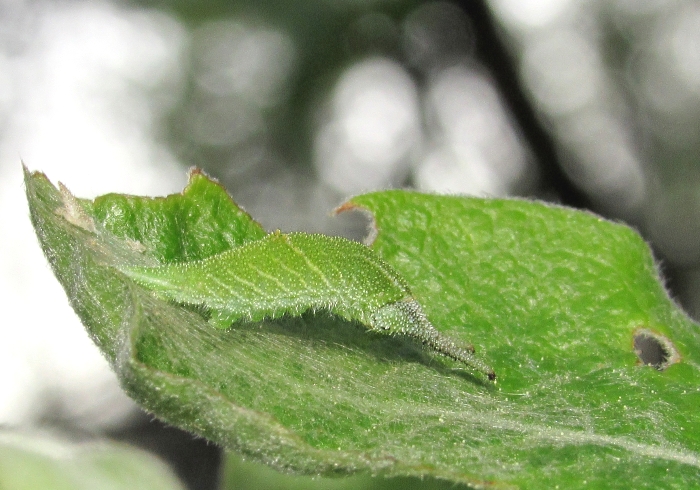Two days ago, his leaf weighed down by the rain, he looked like this:
Yesterday, he was still laid up. Thus, I know he ecdysed today (or last night) - exactly two weeks after his last transition. If he spends the usual 17-18 days in fifth instar, then a couple more preparing to pupate, we are looking at a June emergence. One other caterpillar, Kisāgotamī, has been laid up a day longer than Gautama but still not shed her skin. This was her tonight:
EDIT: As expected, Kisāgotamī had shed her skin by the time I checked on her this morning, 22nd May:














